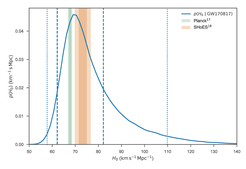Observing and interpreting gravitational waves
Thesis research on this topic will involve the AEI and the Leibniz Institute for Astrophysics.
To identify gravitational-wave signals in the detectors’ data, one searches the data with a set of filter waveforms chosen to cover the full range of potential compact-object binary systems. If one uses too many filter waveforms the computational cost quickly becomes intractable. Conversely, if one uses too few filter waveforms or does not cover the full parameter space well, then the LIGO and Virgo detectors may miss GW signals and may potentially introduce observational biases.

Scientists at the AEI have been among the largest contributors to the modeled searches used by LIGO and Virgo to detect and identify the gravitational-wave events. AEI researchers have also developed methods for the extraction of physical information upon detections, using Bayesian statistical theory. Moreover, to reduce the computational cost of generating waveform models for detection pipelines and (especially) Bayesian analyses, researchers at AEI have developed reduced-order models (ROM).
The above algorithms and methods (matched filtering or signal processing, Bayesian analysis, ROM techniques, etc.) constitute today the bread and butter of scientists interested in extracting astrophysical, cosmological and fundamental physics information upon detection. Graduate students in the IMPRS will be trained on these topics. They will then pursue their research by being directly involved in LIGO and Virgo searches, and parameter-estimation follow ups, identifying the gravitational-wave sources, and interpreting their characteristics. They will address relevant questions on the astrophysical formation scenarios of binary black holes and binary neutron stars, on the equation of state of neutron stars, on the validity of general relativity in the highly dynamical, strong field regime, and on cosmological parameters, such as the Hubble parameter, using electromagnetic counterparts and/or statistical methods with galaxy clusters. Some students will also be involved in research activities related to future detectors, such the space-based detector LISA and 3G detectors. Several AEI scientists are members of the LISA Consortium, and others are building the Science Case for 3G detectors. Those future detectors are supposed to be online in 10-15 years.
